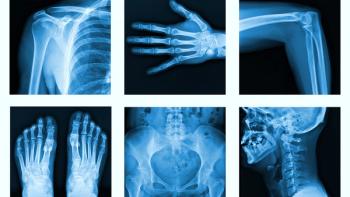
- BioPharm International's BP Elements, March 2022
- Volume 1
- Issue 3
The Next Step For COVID-19 Vaccines
New technologies are treatments are emerging to tackle COVID-19 and its assortment of new variants.
As COVID-19 swept across the world, it has impacted millions of individuals and families. During that time, the biopharmaceutical industry came together to create treatments as swiftly as possible. As of January 2022, the main types of COVID-19 vaccines to treat SARS-CoV-2 that are approved or authorized include (1):
- Messenger RNA (mRNA) vaccines, which use genetically engineered mRNA to teach cells how to make a protein that triggers an immune response (ex: Pfizer-BioNTech and Moderna’s COVID-19 vaccines).
- Viral vector vaccines give cells genetic instructions to produce antigens, using a different, harmless virus from the one the vaccine is targeting (e.g., Johnson & Johnson’s [J&J] COVID-19 vaccine).
Telma Lery, Janssen EMEA therapeutic area lead for infectious diseases and vaccines at Johnson & Johnson, explains that the company’s COVID-19 vaccine candidate (also known as Ad26.COV2.S, Ad26COVS1, VAC31518, JNJ-78436735, or Ad26-S.PP) is a monovalent, recombinant, inactivated/non-infective adenovirus vector (similar to a cold virus), which contains a transgene that codes for the coronavirus spike (S) protein.
Other vaccines are in the works as well. Some of the COVID-19 vaccines in clinical trials include—but are not limited to—whole virus, protein subunit, and nucleic acid vaccines (RNA and DNA) as well as more mRNA and viral vector vaccines (2). Vaxart, an American biotechnology company, is developing oral recombinant vaccines, one of which is in clinical trials in the United States as a candidate to prevent COVID-19.
“‘Recombinant vaccine’ means using DNA technology to make a protein target (i.e., antigen), rather than using the native virus to make the antigen,” says Sean Tucker, chief scientific officer of Vaxart. “Most flu vaccines [are] made in eggs by growing a flu virus, deactivating it, and injecting it in a vaccine. We use a dead common cold virus to deliver the DNA encoding the antigen to the person, where the antigen is then made. Our vaccine delivers the DNA via a tablet that breaks open in the intestine. Our vaccine works because we have a molecule that tells the immune system to pay attention to the antigen that is being made.”
“Most recombinant vaccines are made in a liquid that is injected into the arm, like the Hepatitis B vaccine. Our vaccine is dried and tableted with inert ingredients; so, it can be swallowed,” Tucker explains.
Developing COVID-19 vaccines
J&J has worked with industry partners, governments, and health authorities since the beginning of the COVID-19 pandemic to develop a preventative COVID-19 vaccine candidate, Lery explains. But prior to the pandemic, the company researched vaccine technology, which Lery believes granted J&J a head start in the development of its COVID-19 vaccine. The vaccine technology, AdVac, is based on the development and production of adenovirus vectors (gene carriers).
“There are 57 identified distinct variations (serotypes) of adenovirus, a type of virus that causes the common cold. Adenovirus vectors (gene carriers) are genetically altered forms of an adenovirus and lack the DNA needed to replicate. So, the vaccine cannot cause a cold, and the protein it produces cannot cause harm either,” says Lery, adding that the vaccine technology makes use of adenovirus vector Ad26, specifically.
One of the differentiating factors in the development of J&J’s COVID-19 vaccine is what could be termed “multitasking efforts.” The company combined phases of early-stage trials and had its discovery and manufacturing teams conduct processes in parallel—rather than sequentially.
The process for developing an oral recombinant vaccine, on the other hand, is similar to an injectable vaccine in terms of the clinical trials and the path to approval, according to Tucker.
“We began by identifying six vaccine candidates and winnowed the list to two,” Tucker continues. “Our initial Phase I trial tested a version that made two different antigens from SARS-CoV-2, the S protein and the nucleocapsid (N) protein. That S+N candidate made very strong T cell responses and nasal antibody responses that were cross-reactive against a wide variety of coronaviruses. The current set of trials (Phase II in the US) is evaluating an S-only protein approach, which made better antibody responses in non-human primates.”
But the process of identifying and progressing to clinical trials in a pandemic wasn’t without its challenges. In early 2021, Vaxart had to compete with other biotech companies for manufacturing space. Fortunately, the company had two plants for producing pills for their clinical trials and had enough materials on hand.
Some of the main differences between a COVID-19 oral tablet vaccine from injectable COVID-19 vaccines, according to Tucker, include:
- Immune responses are triggered in the mucosa and the serum with a COVID-19 oral tablet vaccine (based on preclinical and clinical testing), unlike the existing vaccines that are serum-only.
- Ease of distribution and vaccination with a COVID-19 oral tablet vaccine, which eliminates the need for special accommodations to transport injectable vaccines that require cold chain infrastructure as well as the need for trained professionals to administer vaccines.
The research behind COVID-19 vaccines: antigens
Understandably, the COVID-19 vaccines weren’t created without upfront heavy lifting. One company, The Native Antigen Company, part of LGC Clinical Diagnostics, provides commercially available S1 and S2 antigens for SARS-CoV-2, which include the amino mutations associated with different variants. The company developed more than 100 antigens, antibodies, receptors, and kits for the coronavirus, which have been used by diagnostic, therapeutic, vaccine, and public health organizations to study SARS-CoV-2 and develop countermeasures against it.
Vaccine developers can use S mutant antigens to raise mutant-specific antibodies and develop assays (often enzyme-linked immunosorbent assays) to assess the efficacy of their vaccines, according to James Shore, technical product manager of The Native Antigen Company. In addition, biopharmaceutical companies use The Native Antigen Company’s reagents to develop monoclonal antibody therapies against SARS-CoV-2 and its variants. But how can S antigens be adapted to address the various variants?
“If a variant includes only a couple of point mutations, then a modification of PCR [polymerase chain reaction] amplification can be used to introduce changes to the gene sequence,” says Shore. “More commonly, however, the sequence is computationally redesigned and chemically re-synthesized.”
Addressing variants
No matter the type, COVID-19 vaccines and treatments must address new variants and mutations of the virus in some capacity. Some of the variants include Delta, Mu, and Omicron.
“COVID-19 variants arise through mutations in the virus. Mutations may result in the virus obtaining increase in transmissibility, more severe disease, reduction in vaccine or treatment efficacy, etc.,” says Kristina Hsieh, scientific affairs lead, Clear Labs. “There are numerous real-world studies that have shown that getting vaccinated reduces one’s risk of severe illness, hospitalization, and death from the different variants. One of the articles recently published by Bajema et al. indicated a reduction in hospitalization due to vaccination from data gathered from five Veterans Affairs Medical Centers” (3–5).
Hsieh adds that the main difference, genetically, between the variants are different mutations that have accumulated throughout the virus. As the Delta variant has demonstrated, some mutations may lead to increased transmissibility and/or more serious illness. In addition, one of the new variants, Omicron, has been detected in the US.
“The CDC and its public health partners are working closely to monitor this variant,” says Hsieh. “Through Whole Genome Sequencing (WGS), public health laboratories are able to quickly identify, track, and monitor the variant.”
In addition to monitoring variants of the virus and being vigilant in the research and development of new COVID-19 vaccines and treatments, the industry needs to continue to communicate and share resources. Consistent communication and collaboration between all organizations in the biopharmaceutical industry—from governments, to agencies, to developers, to manufacturers, and everyone in between—will play a huge role in combatting the spread and impact of COVID-19.
References:
- CDC, “Different COVID-19 Vaccines,” www.cdc.gov, accessed Dec. 10, 2021.
- Gavi, “There are Four Types of COVID-19 Vaccines: Here’s How They Work,” www.gavi.org, accessed Dec. 10, 2021.
- M. W. Tenforde et al., “Association Between mRNA Vaccination and COVID-19 Hospitalization and Disease Severity,” JAMA, www.jamanetwork.com/journals (Nov. 4, 2021).
- H. Chung et al., “Effectiveness of BNT162b2 and mRNA-1273 Covid-19 Vaccines Against Symptomatic SARS-CoV-2 Infection and Severe Covid-19 Outcomes in Ontario, Canada: Test Negative Design Study,” The BMJ, www.bmj.com (Aug. 20. 2021).
- K. L. Bajema et al., Morbidity and Mortality Weekly Report, Effectiveness of COVID-19 mRNA Vaccines Against COVID-19–Associated Hospitalization — Five Veterans Affairs Medical Centers, United States, February 1–August 6, 2021, www.ncbi.nlm.nih.gov (Vol. 70, No. 37, Sept. 17, 2021).
About the author
Meg Rivers is a senior editor for Pharmaceutical Technology, Pharmaceutical Technology Europe, and BioPharm International.
Articles in this issue
almost 4 years ago
Researchers Make Progress with New Method of Rebuilding Bone Tissuealmost 4 years ago
New England Biolabs Releases Lyophilized Master Mixalmost 4 years ago
Element Biosciences Partners with Genoox on Validation Projectalmost 4 years ago
FDA to Hold Public Symposium on Multi-Identification Biomarkersalmost 4 years ago
European Patent Office Grants Further Patent to Salipro BiotechNewsletter
Stay at the forefront of biopharmaceutical innovation—subscribe to BioPharm International for expert insights on drug development, manufacturing, compliance, and more.




